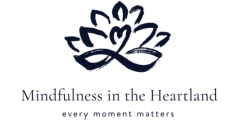Last week I posted a teaching from the Buddha called, The Second Arrow. In this teaching he suggests personal suffering is increased by resisting the original sources of pain (access the original post here).
Well, wouldn’t you know it, I had first hand experience with a second arrow this past week. Not wanting to lose an opportunity, I thought I’d use this personal experience to elaborate a bit more on how I interpret this teaching in my own life.
First-off, I’d like to say that for me, pain may express itself in a number of ways. It may show up as physical pain, psychological pain, or sometimes, more subtly, as a sense of internal agitation. The experience I had this week was more of the nebulous variety that expressed itself as a feeling of irritation.
I awoke one morning feeling out of sorts and couldn’t quite put my finger on what exactly was wrong. If I were to try and create an analogy for the sensation I was experiencing, it was like someone was incessantly tapping on my chest with their finger. Annoying, right? My normal inclination in a situation like this would have been to spend some time alone, but the day had begun and wasn’t going to wait for me to pull it together. So, I went through the morning cranky and short on patience.
At about noon, I recognized that there was no “story” to play alongside my irritability – there was nothing tangible to corroborate why my fuse was so short. Since the sensation wasn’t abating, I gathered a few minutes of alone time and sat with it – and by this I mean, I dropped my attention into the place in my body where I could physically feel the discomfort (in this case my chest) and I just observed what was going on inside.
As I sat there, what came up for me was not anger as I would have anticipated, but sadness. I was sad. I still can’t explain why I was sad – I just was. So, I sat alone for a few minutes and shed some tears until they subsided of their own volition. I then proceeded to wipe the tears off my face and return to my day, which not surprisingly, went a heck of a lot smoother! The nagging sensation was gone and by default so was my internal resistance to it.
In this instance, the first arrow was my sadness. It showed up for me as the nagging sensation in my chest first thing in the morning. My irritability was the second arrow. Instead of feeling the sadness, my knee-jerk response was to make everything around me “wrong” and so I went about my morning complaining and pushing everything away.
At another point in my life, I wouldn’t have been able to recognize my irritability as an indication something more was going on inside of me. For many years, I pushed painful feelings away or numbed them out entirely. It has only been through sitting with internal discomfort that I’ve learned to recognize when something within me needs attention – and even now there are moments when the insight to inquire is elusive to me. Like everything else in life, it takes practice to tune into this stuff…especially if we’ve had a lot of practice tuning out.
If you really stop to think about it, the aversion to being with our pain is really about being wrapped up in judgments – our thoughts about the way things “should” be, or how we “should” feel. The fact is, pain comes part and parcel with the human experience. I have found letting go of any judgments towards myself, my situation or others to be very helpful for getting through whatever unpleasant experience I may be having.
It is also important to recognize that these second arrows don’t just increase suffering for ourselves, they can also spill over into the lives of those around us. Sometimes we subvert our pain by taking it out on those around us – which could be equated to launching our own arrows out into the world. This is yet another reason why it is so crucial that we deal with our sources of suffering.
The sensation of pain is much like an indicator light on the dashboard of a car – both alert us there is something amiss in the internal system. Of course, we have some options for how we address these indicators: we can complain about them, ignore them or take the time to investigate what’s going on under the hood.
Neither complaining about nor ignoring the indication of pain does anything to resolve the underlying issue. Both responses only extend the life of our pain and additionally have the potential to make matters worse. The beauty of sitting with our discomfort is that we have opportunity to heal what afflicts us; it is the means for really getting to the other side of suffering. And when we do this, we are not only that much more resilient, but we possess greater compassion and wisdom that can be put to use throughout the rest of our lives.

